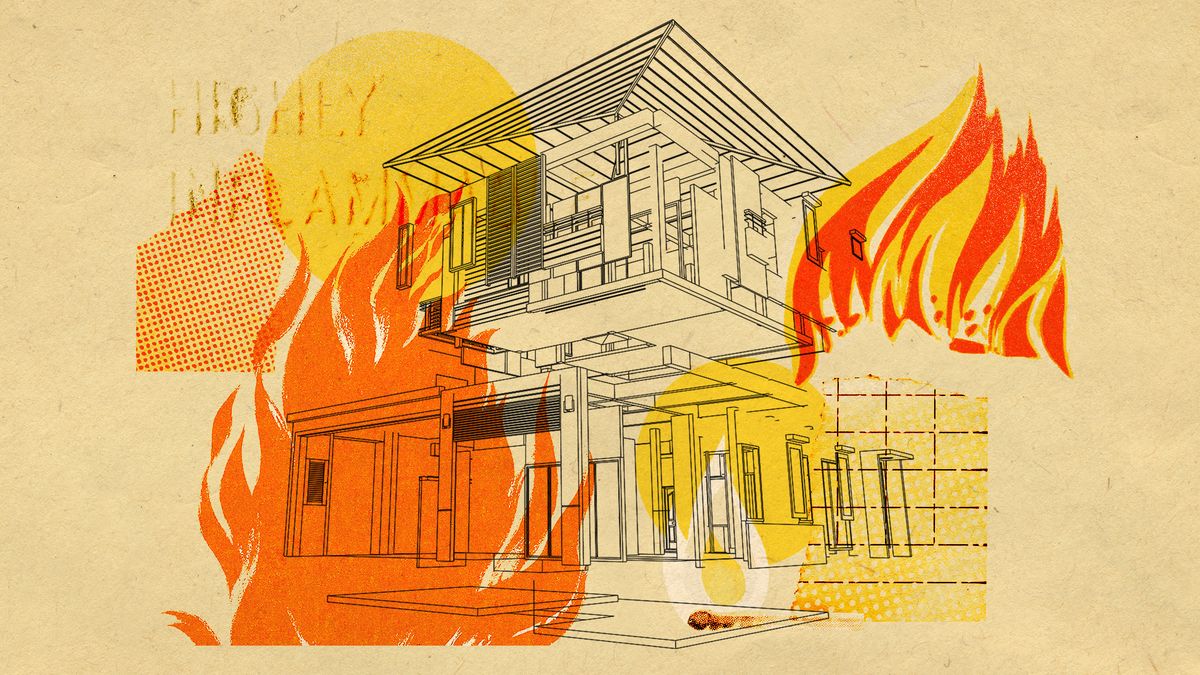The Secrets Behind Wildfire-Resistant Homes: What Makes the Difference?
As wildfires become increasingly devastating, understanding why some homes withstand the flames while others don’t is crucial. The destructive power of wildfires has intensified, making it essential for homeowners, especially in fire-prone areas, to consider wildfire-resistant homes. This article delves into the architectural features and materials that offer resilience against nature’s fury, revealing the secrets that can make a significant difference in surviving a wildfire.
Understanding Wildfire Dynamics
Before diving into the specifics of wildfire-resistant homes, it’s important to understand how wildfires behave. Wildfires are influenced by several factors, including:
- Fuel: The type and amount of vegetation available for burning.
- Weather: Temperature, humidity, wind speed, and direction can all affect fire behavior.
- Topography: The landscape’s shape can either hinder or facilitate the spread of fire.
These elements combine to create a complex environment where the flames can spread rapidly, highlighting the importance of designing homes that can withstand such conditions.
Key Architectural Features of Wildfire-Resistant Homes
When it comes to building a home that can resist wildfires, several architectural features and design principles come into play. Here are some of the most effective strategies:
1. Fire-Resistant Materials
One of the most significant factors in wildfire-resistant homes is the use of fire-resistant materials. The following materials are known for their ability to withstand high temperatures:
- Stucco: This cement-based material is not only aesthetically pleasing but also provides excellent fire resistance.
- Brick and Stone: Natural materials like brick and stone can withstand fire and are commonly used in construction.
- Fiber-Cement Siding: This composite material is designed to resist flames and is often used as a safer alternative to traditional wood siding.
2. Defensible Space
Creating a defensible space around a home is crucial. This involves landscaping and maintenance practices that reduce fire risk. Homeowners should:
- Clear flammable vegetation within at least 30 feet of the home.
- Use fire-resistant plants and landscaping materials.
- Regularly maintain lawns and gardens by removing dead plants, leaves, and debris.
Establishing a defensible space can significantly decrease the likelihood of a fire reaching the home.
3. Roof Design
The roof is one of the most vulnerable parts of a home during a wildfire. Opting for a fire-resistant roof can make a considerable difference in survival rates. Recommended roofing materials include:
- Metal: Durable and non-combustible, metal roofs are excellent for fire resistance.
- Tile: Clay and concrete tiles offer good protection against flames.
- Asphalt Shingles: Look for those rated Class A, which indicates high fire resistance.
4. Windows and Vents
Windows and vents can be entry points for flames and embers. To mitigate this risk:
- Install tempered or dual-pane glass windows that can withstand high heat.
- Use metal screens for vents to prevent embers from entering the home.
- Consider using exterior shutters that can be closed during a wildfire.
Innovative Technologies in Fire Resistance
Advancements in technology have also led to new materials and methods that enhance the fire resistance of homes. These innovations include:
- Fire-Retardant Chemicals: Many building materials can be treated with fire-retardant substances to improve their resistance to flames.
- Fire-Resistant Insulation: Insulation materials that are non-combustible can help protect homes from heat transfer during a fire.
- Smart Home Technology: Systems that monitor air quality and temperature can alert homeowners to potential fire risks, allowing for timely action.
Community and Urban Planning Considerations
Beyond individual homes, community planning plays a crucial role in wildfire resistance. Local governments can implement measures such as:
- Firebreaks: Creating gaps in vegetation that can help slow the spread of fire.
- Zoning Regulations: Enforcing building codes that require fire-resistant materials and designs in high-risk areas.
- Public Awareness Programs: Educating residents about fire safety, defensible space, and emergency preparedness.
By working together as a community, residents can enhance their collective resilience against wildfires.
The Psychological Aspect: Homeowner Preparedness
While structural and community measures are essential, homeowner preparedness is equally important. Understanding the risks and being proactive can make a significant difference. Homeowners should:
- Stay informed about local fire dangers and evacuation procedures.
- Create a family emergency plan that includes evacuation routes and communication strategies.
- Invest in fire insurance to protect their homes and belongings.
Preparedness can provide peace of mind, knowing that they have taken steps to protect their families and homes.
Conclusion: Building Resilience for the Future
As wildfires grow more frequent and intense, the importance of wildfire-resistant homes cannot be overstated. By incorporating fire-resistant materials, creating defensible spaces, and leveraging innovative technologies, homeowners can significantly improve their chances of withstanding a wildfire. Additionally, community efforts and homeowner preparedness play pivotal roles in enhancing overall resilience.
Ultimately, the secrets behind wildfire-resistant homes lie not only in the materials and designs but also in the collective effort of individuals and communities to adapt and prepare for the challenges posed by nature. With the right strategies in place, it is possible to create safe havens even in the most fire-prone areas, ensuring that homes remain standing against nature’s fury.
See more Your Daily Weather



